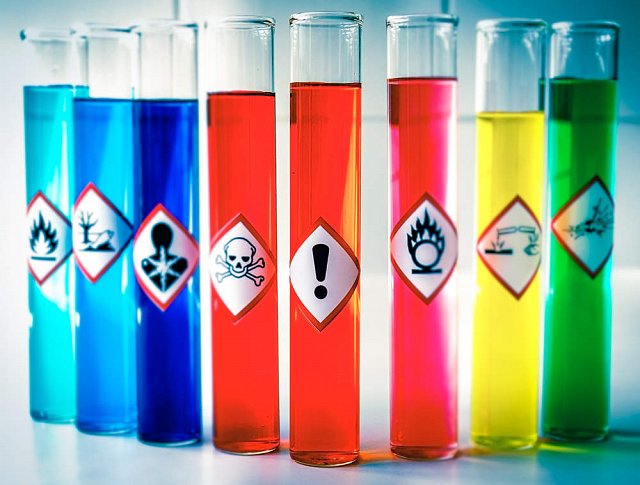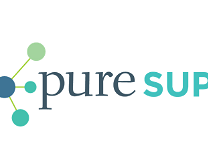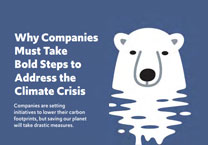Chemical footprinting has arrived at Levi’s, Seagate, J&J
by Tim Greiner
26 May 2016

 In a world where chemical regulations and market demands for safer chemicals are on the rise, how can investors know which firms are most at risk from these emerging trends and which are best positioned to capture new markets with safer products?
In a world where chemical regulations and market demands for safer chemicals are on the rise, how can investors know which firms are most at risk from these emerging trends and which are best positioned to capture new markets with safer products?
How can institutional purchasers know which suppliers are taking the systematic steps necessary to identify and reduce chemicals of high concern in products and supply chains? And how can companies demonstrate to purchasers and investors their leadership in chemicals management when they lack an objective, third-party metric that recognizes their efforts?
The inaugural Chemical Footprint Project report released this week highlights the financial risks that companies face due to chemicals of high concern (CoHCs) to human health and the environment in their products and supply chains. The Chemical Footprint Project is an initiative backed by companies and investors with a total $1.1 trillion in assets under management and purchasing power, which aims to help companies measure, analyze and ultimately act to mitigate their reliance on potentially hazardous chemicals.
The new report features key findings from the 2015 survey, including an assessment of how companies manage the potential liabilities posed by hazardous chemicals and opportunities for improvement.
These financial liabilities include "the three Rs" of: regulatory risks (costs of current and future regulations); reputation risks (costs of being exposed publicly with hazardous chemicals in products or supply chains); and redesign risks (costs related to not redesigning or reformulating products before regulations change or markets shift, measured in annual revenue).
Large companies, some with tens of billions in annual revenue, stepped forward to participate in the first survey. Respondents included both privately and publicly held companies from seven sectors: consumer durables and apparel; household and personal products; health care equipment and services; capital goods; technology hardware and equipment; consumer services; and food, beverage and tobacco.
Of the 24 participating companies, 22 agreed to be named publicly. Participants include: Levi Strauss & Co., Seagate Technology, PLC, Johnson & Johnson, GOJO Industries, Becton, Dickinson and Company, Beautycounter and California Baby.
Participation in the survey reflects each company’s leadership in chemicals management and its openness to opportunities for improvement. Results of the report are based on participants’ responses to a 20-question survey on performance related to managing chemicals in four categories: management strategy; chemical inventory; footprint measurement; and disclosure and verification.
Key findings include:
1. Senior leadership matters
The 29 percent of firms with board-level oversight or senior management incentives performed better overall than firms with no such accountability.
Companies need comprehensive policies: Without policies that address chemical hazards in manufacturing, supply chains and packaging — in addition to products — companies face hidden liabilities and chemical risks.
2. Disclosure lags practice
Across every indicator category — management, inventory, footprint and disclosure — companies have more chemicals management practices in place than they share publicly.
For example, 83 percent have a legally restricted substances list, but only 17 percent of those companies make that list public.
3. "Design for Health" sets leading edge
"Design for Health" companies, whose entire product portfolios are based on minimizing or eliminating chemicals of high concern, performed well above the average company.
4. Chemical footprining is still new and challenging
Before they can reduce their chemical footprints, companies need to know the chemical ingredients in their products and identify chemicals of high concern, so it’s no surprise that in this first year, companies scored low for measuring baseline chemical footprint.
Companies pioneer chemical footprinting
Bart Sights, vice president of technical innovation for Levi Strauss & Co., highlighted the value of comprehensive chemicals management for brands. He said the company is committed to working with suppliers and others to identify alternative chemicals.
"We believe that innovation in this realm, both on our own and together with our garment manufacturers and chemical suppliers, presents significant business opportunities, as well as huge potential for advancing environmental sustainability," he said. "For purchasers, the Chemical Footprint Project provides a common standard to consistently evaluate suppliers, helping to meet sustainability goals and providing a solid basis for side-by- side comparison."
Mary Ellen Leciejewski, director of ecology at Dignity Health (fifth largest non-profit health care system in the U.S.), explained the value of chemical footprinting for purchasers: "Our commitment to the Chemical Footprint Project furthers our mission of improving quality of life for our patients, staff and the communities we serve."
The Chemical Footprint Project also gives investors an invaluable new tool to help them discern which firms bear the highest chemical risk and which are best positioned to capture new markets with safer products.
Matthew W. Patsky, CEO and portfolio manager at Trillium Asset Management emphasized this dynamic in his foreword to the report. He called for companies to "provide consistent, transparent data" on hazardous chemicals.
"Integrating this information into our investment processes will help identify industry leaders and reduce company-specific risk in our portfolios," Patsky explained.
The report concludes that reducing chemical risk is challenging and requires leadership, training and incentives for employees and suppliers, and investment in data management systems.
While these changes initially may be resource-intensive, they can result in great increases in customer trust and loyalty and open up many new business opportunities, especially for companies that sell directly to consumers.
This article is co-authored by Mark Rossi, Sally Edwards, Tim Greiner and Cheri Peele and originally appeared in GreenBiz.
Written by Tim Greiner
Tim Greiner, a Pure Strategies Co-founder and Managing Director, has pioneered approaches to building environmental and social integrity into products, brands, and businesses. He is also a co-founder of the Chemical Footprint Project and has guided sustainable chemicals management strategies for companies across diverse industries. His experience spans the spectrum from developing sustainability strategy, drafting sustainability goals, designing product sustainability programs, creating approaches to transform sustainable supply chains and facilitating a landscape level stakeholder process to improve climate and water quality outcomes.
Tim's recent projects include helping build a leading climate strategy for Ben & Jerry's, developing sustainability goals for King Arthur Baking, creating a corporate sustainability strategy for Lush, and developing a regenerative grazing standard for Timberland.












